#Ælfgifu of shaftesbury
Text
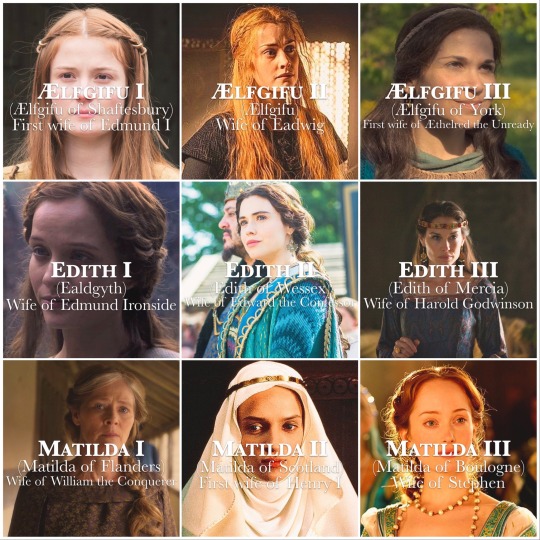



If the English and British consorts had regnal numbers
#i decided not to include the ones where there’s only one consort with that name#since they wouldn’t have a number#Ælfgifu of shaftesbury#Ælfgifu#Ælfgifu of york#ealdgyth#edith of wessex#edith of mercia#matilda of flanders#matilda of scotland#matilda of boulogne#eleanor of aquitaine#isabella of angoulême#eleanor of provence#eleanor of castile#margaret of france#isabella of france#anne of bohemia#isabella of valois#catherine of valois#margaret of anjou#elizabeth woodville#anne neville#elizabeth of york#catherine of aragon#anne boleyn#anne of cleves#katherine howard#katherine parr#phillip ii
135 notes
·
View notes
Text


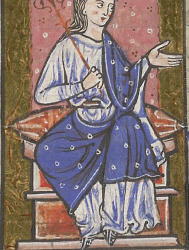







The Bastard Kings and their families
This is series of posts are complementary to this historical parallels post from the JON SNOW FORTNIGHT EVENT, and it's purpouse to discover the lives of medieval bastard kings, and the following posts are meant to collect portraits of those kings and their close relatives.
In many cases it's difficult to find contemporary art of their period, so some of the portrayals are subsequent.
1) Aethelstan I of England (894 – 939), son of Edward the Elder and his wife Ecgwynn
2) Edward the Elder (c. 874 –924), son of Alfred the Great and his wife Ealhswith
3) Æthelflæd of Mercia (c. 870 – 918), daughter of Alfred the Great and his wife Ealhswith
4) Eadgifu of Wessex (? - c. 951), daughter of Edward the Elder and his wife Ælfflæd; and her son with Charles III of France, Louis IV of France (920/921 – 954)
5) Edmund I of England (920/921 – 946), son of Edward the Elder and his wife Eadgifu of Kent
6) Eadwig I "All-Fair" of England (c. 940 – 959), son of Edmund I of England and his wife Ælfgifu of Shaftesbury
7) Edgar I of England (944 – 975), son of Edmund I of England and his wife Ælfgifu of Shaftesbury
8) Eadred I of England (c. 923 – 955), son of Edward the Elder and his wife Eadgifu of Kent
9) Eadburh of Winchester (921/924-951/953), daughter of Edward the Elder and his wife Eadgifu of Kent
10) Eadgyth of England (910–946), daughter of Edward the Elder and his wife Ælfflæd
#jonsnowfortnightevent2023#canonjonsnow#day 10#echoes of the past#asoiaf#a song of ice and fire#historical parallels#medieval bastard kings#bastard kings and their families#aethelstan i of england#aethelstan of england#edward the elder#Æthelflæd#Lady of the Mercians#Eadgifu of Wessex#Louis IV of France#Edith of England#Eadred of England#Edmund I of England#Eadburh of Winchester#Eadwig All-Fair#Edgar of England#aethelflaed of mercia
17 notes
·
View notes
Text
Partial List of Royal Saints
Saint Abgar (died c. AD 50) - King of Edessa, first known Christian monarch
Saint Adelaide of Italy (931 - 999) - Holy Roman Empress as wife of Otto the Great
Saint Ælfgifu of Shaftesbury (died 944) - Queen of the English as wife of King Edmund I
Saint Æthelberht of Kent (c. 550 - 616) - King of Kent
Saint Æthelberht of East Anglia (died 794) - King of East Anglia
Saint Agnes of Bohemia (1211 - 1282) - Bohemian Princess, descendant of Saint Ludmila and Saint Wenceslaus, first cousin of Saint Elizabeth of Hungary
Saint Bertha of Kent (c. 565 - c. 601) - Frankish Princess and Queen of Kent as wife of Saint Æthelberht
Saint Canute (c. 1042 - 1086) - King of Denmark
Saint Canute Lavard (1096 - 1131) - Danish Prince
Saint Casimir Jagiellon (1458 - 1484) - Polish Prince
Saint Cormac (died 908) - King of Munster
Saint Clotilde (c. 474 - 545) - Queen of the Franks as wife of Clovis I
Saint Cunigunde of Luxembourg (c. 975 - 1033) - Holy Roman Empress as wife of Saint Henry II
Saint Edmund the Martyr (died 869) - King of East Anglia
Saint Edward the Confessor (c. 1003 - 1066) - King of England
Saint Edward the Martyr (c. 962 - 978) - King of the English
Saint Elesbaan (Kaleb of Axum) (6th century) - King of Axum
Saint Elizabeth of Hungary (1207 - 1231) - Princess of Hungary and Landgravine of Thuringia
Saint Elizabeth of Portugal (1271 - 1336) - Princess of Aragon and Queen Consort of Portugal
Saint Emeric (c. 1007 - 1031) - Prince of Hungary and son of Saint Stephen of Hungary
Saint Eric IX (died 1160) - King of Sweden
Saint Ferdinand (c. 1199 - 1252) - King of Castile and Toledo
Blessed Gisela of Hungary (c. 985 - 1065) - Queen Consort of Hungary as wife of Saint Stephen of Hungary
Saint Helena (c. 246 - c. 330) - Roman Empress and mother of Constantine the Great
Saint Henry II (973 - 1024) - Holy Roman Emperor
Saint Isabelle of France (1224 - 1270) - Princess of France and younger sister of Saint Louis IX
Saint Jadwiga (Hedwig) (c. 1373 - 1399) - Queen of Poland
Saint Joan of Valois (1464 - 1505) - French Princess and briefly Queen Consort as wife of Louis XII
Blessed Joanna of Portugal (1452 - 1490) - Portuguese princess who served as temporary regent for her father King Alfonso V
Blessed Karl of Austria (1887 - 1922) - Emperor of Austria, King of Hungary, King of Croatia, and King of Bohemia
Saint Kinga of Poland (1224 - 1292) - Hungarian Princess, wife of Bolesław V of Poland and niece of Saint Elizabeth of Hungary
Saint Ladislaus (c. 1040 - 1095) - King of Hungary and King of Croatia
Saint Louis IX (1214 - 1270) - King of France
Saint Ludmila (c. 860 - 921) - Czech Princess and grandmother of Saint Wenceslaus, Duke of Bohemia
Blessed Mafalda of Portugal (c. 1195 - 1256) - Portuguese Princess and Queen Consort of Castile, sister of Blessed Theresa of Portugal
Saint Margaret of Hungary (1242 - 1270) - Hungarian Princess, younger sister of Saint Kinga of Poland and niece of Saint Elizabeth of Hungary
Saint Margaret of Scotland (c. 1045 - 1093) - English Princess and Queen Consort of Scotland
Blessed Maria Cristina of Savoy (1812 - 1836) - Sardinian Princess and Queen Consort of the Two Sicilies
Saint Matilda of Ringelheim (c. 892 - 968) - Saxon noblewoman and Queen of East Francia as wife of Henry I
Saint Olaf (c. 995 - 1030) - King of Norway
Saint Olga of Kiev (c. 900 - 969) - Grand Princess of Kiev and regent for her son Sviatoslav I, grandmother of Saint Vladimir the Great
Saint Oswald (c. 604 - 642) - King of Northumbria
Saint Radegund (c. 520 - 587) - Thuringian Princess and Frankish Queen
Saint Sigismund of Burgundy (died 524) - King of the Burgundians
Saint Stephen of Hungary (c. 975 - 1038) - King of Hungary
Blessed Theresa of Portugal (1176 - 1250) - Portuguese Princess and Queen of León as wife of King Alfonso IX, sister of Blessed Mafalda
Saint Vladimir the Great (c. 958 - 1015) - Grand Prince of Kiev and grandson of Saint Olga of Kiev
26 notes
·
View notes
Text
Holidays 5.18
Holidays
Baltic Fleet Day (Russia)
Black Watch Day
Constitution and Flag Day (Turkmenistan)
Day of Remembrance of Crimean Tatar Genocide (Ukraine)
Discovery Day (Cayman Islands)
eCard Day
Fibroid Awareness Day (Jamaica)
Flag and Universities Day (Haiti)
Hispanic Family Day
HIV Vaccine Awareness Day
International AIDS Candlelight Memorial
International Day for Women in Maritime
International Museum Day [also 9.18]
Let’s Get Creative Day
Magtymguly Day (a.k.a. Revival, Unity & Poetry Day; Turkmenistan)
Mother Whistler Day
Mount Saint Helens Day
Mullivaikkal Remembrance Day (Sri Lankan Tamils)
National AAPI Day Against Bullying
National Brock Day
National CASA/GAL Volunteer’s Day
National Fascination of Plants Day
National Haitian Soul Snatching Day
National HIV Vaccine Awareness Day
National Kids Ignite Good! Day
National Marvin Day
National Speech Pathologist Day
National Stress Awareness Day
National Tenant's Day
No Dirty Dishes Day
Rooster Day
Send An Electronic Greeting Card Day
Teacher’s Day (Syria)
Victory Day (Sri Lanka)
Visit Your Relatives Day
World AIDS Vaccine Day
World Catholic Education Day
World Goodwill Day
World Hollandia Dairy Day (Nigeria)
World Homocystinurias Awareness Day
Food & Drink Celebrations
I Love Reese’s Day
National Bento Day
National Cheese Soufflé Day
National Cocktail Day (Portugal)
National Marshmallow Day (Australia)
Wild Mustard Day (French Republic)
3rd Thursday in May
Brown Bag It Thursday [3rd Thursday]
Global Accessibility Awareness Day [3rd Thursday]
Hummus Day [3rd Thursday]
International Vyshyvanka Day [3rd Thursday]
National Apéritif Day [3rd Thursday]
National Notebook Day [3rd Thursday]
Independence Days
Shorewell (Declared; 2016) [unrecognized]
Somaliland (from Somalia, 1991) [unrecognized]
Feast Days
Ælfgifu of Shaftesbury (Christian; Saint)
Apollon Day (Old Roman Festival to Apollo, God of Music, Poetry & Sunlight)
Ascension Day [39 Days after Easter, 40th Day of Easter] (a.k.a. …
Father's Day (Germany)
Feast of the Ascension
Festa della Sensa (Venice)
Global Day of Prayer (Western Christianity)
Heroes' Day (Romania)
Holy Thursday
Sheep Festival (Cameroon)
Eric IX, King of Sweden (Christian; Saint)
Felix of Cantalice (Christian; Saint)
Festival of Faunus (Ancient Rome)
Festival of Pan (Ancient Greece)
Gertrude Käsebier (Artology)
John I, Pope (Christian; Saint)
Leonard Nimoy Day (Church of the SubGenius; Saint)
The Letter Tree (Muppetism)
Papinian (Positivist; Saint)
Potamon (Christian; Saint)
Russell’s Teapot Day (Pastafarian)
Theodotus (Christian; Saint) [innkeepers]
Venantius of Camerino (Christian; Saint)
Vor’s Blot (Pagan)
Yom Yerushalayim begins (Jerusalem Day; Israel) [Iyar 28]
Lucky & Unlucky Days
Fortunate Day (Pagan) [19 of 53]
Lucky Day (Philippines) [30 of 71]
Sensho (先勝 Japan) [Good luck in the morning, bad luck in the afternoon.]
Tycho Brahe Unlucky Day (Scandinavia) [24 of 37]
Premieres
Baptism, by Lenny Kravitz (Album; 2004)
Book Club (Film; 2018)
Buddy’s Lost World (WB LT Cartoon; 1935)
Bus Stop, recorded by The Hollies (Song; 1966)
Cadillac Man (Film; 1990)
Deadpool 2 (Film; 2018)
Dracula, by Bram Stoker (Novel; 1897)
Enter Talking, by Joan Rivers (Memoir; 1986)
First Family, by David Baldacci (Novel; 2009)
French Connection II (Film; 1975)
The Handmaid’s Tale, by Margaret Atwood (Novel; 1986)
The House of the Rising Sun, recorded by The Animals (Song; 1964)
Millennium, by the Backstreet Boys (Album; 1999)
Moulin Rouge! (Film; 2001)
Pirates of the Caribbean: On Stranger Tides (Film; 2011)
Pop Life, by Bananarama (Album; 1991)
Shrek (Animated Film; 2001)
Shrek the Third (Animated Film; 2007)
State of Play (UK TV Mini-Series; 2003)
Warren Zevon, by Warren Zevon (Album; 1976)
You Ought to Be in Pictures (WB LT Cartoon; 1940)
Today’s Name Days
Erich, Erika, Felix, Johannes (Austria)
Feliks, Ivan, Srećko, Venancije (Croatia)
Nataša (Czech Republic)
Erik (Denmark)
Eeri, Eerik, Eero, Ergi, Ergo, Erich, Erik, Erki, Erko (Estonia)
Eerik, Eerika, Eerikki, Eero, Erkka, Erkki (Finland)
Éric (France)
Erich, Erika, Felix, Johannes (Germany)
Faeini, Galateia, Ioulia, Julia (Greece)
Alexandra, Erik (Hungary)
Enrico, Erico, Giovanni, Luciano, Venanzio, Veneziano (Italy)
Cindija, Ēriks, Inese, Inesis (Latvia)
Erdvilas, Erikas, Julita, Rytė, Venancijus (Lithuania)
Eirik, Erik, Erika (Norway)
Aleksander, Aleksandra, Alicja, Edwin, Eryk, Eryka, Feliks, Irina, Liboriusz, Myślibor, Wenancjusz (Poland)
Teodot (România)
Viola (Slovakia)
Claudia, Félix (Spain)
Erik (Sweden)
Rosalia, Rose (Ukraine)
Aric, Eric, Erica, Erich, Erick, Ericka, Erik, Erika, Perry (USA)
Today is Also…
Day of Year: Day 138 of 2024; 227 days remaining in the year
ISO: Day 4 of week 20 of 2023
Celtic Tree Calendar: Huath (Hawthorn) [Day 5 of 28]
Chinese: Month 3 (Bing-Chen), Day 29 (Bing-Zi)
Chinese Year of the: Rabbit 4721 (until February 10, 2024)
Hebrew: 27 Iyar 5783
Islamic: 27 Shawwal 1444
J Cal: 17 Bīja; Threesday [17 of 30]
Julian: 5 May 2023
Moon: 1%: Waning Crescent
Positivist: 26 Caesar (5th Month) [Papinian]
Runic Half Month: Ing (Expansive Energy) [Day 9 of 15]
Season: Spring (Day 60 of 90)
Zodiac: Taurus (Day 29 of 30)
0 notes
Text
Holidays 5.18
Holidays
Baltic Fleet Day (Russia)
Black Watch Day
Constitution and Flag Day (Turkmenistan)
Day of Remembrance of Crimean Tatar Genocide (Ukraine)
Discovery Day (Cayman Islands)
eCard Day
Fibroid Awareness Day (Jamaica)
Flag and Universities Day (Haiti)
Hispanic Family Day
HIV Vaccine Awareness Day
International AIDS Candlelight Memorial
International Day for Women in Maritime
International Museum Day [also 9.18]
Let’s Get Creative Day
Magtymguly Day (a.k.a. Revival, Unity & Poetry Day; Turkmenistan)
Mother Whistler Day
Mount Saint Helens Day
Mullivaikkal Remembrance Day (Sri Lankan Tamils)
National AAPI Day Against Bullying
National Brock Day
National CASA/GAL Volunteer’s Day
National Fascination of Plants Day
National Haitian Soul Snatching Day
National HIV Vaccine Awareness Day
National Kids Ignite Good! Day
National Marvin Day
National Speech Pathologist Day
National Stress Awareness Day
National Tenant's Day
No Dirty Dishes Day
Rooster Day
Send An Electronic Greeting Card Day
Teacher’s Day (Syria)
Victory Day (Sri Lanka)
Visit Your Relatives Day
World AIDS Vaccine Day
World Catholic Education Day
World Goodwill Day
World Hollandia Dairy Day (Nigeria)
World Homocystinurias Awareness Day
Food & Drink Celebrations
I Love Reese’s Day
National Bento Day
National Cheese Soufflé Day
National Cocktail Day (Portugal)
National Marshmallow Day (Australia)
Wild Mustard Day (French Republic)
3rd Thursday in May
Brown Bag It Thursday [3rd Thursday]
Global Accessibility Awareness Day [3rd Thursday]
Hummus Day [3rd Thursday]
International Vyshyvanka Day [3rd Thursday]
National Apéritif Day [3rd Thursday]
National Notebook Day [3rd Thursday]
Independence Days
Shorewell (Declared; 2016) [unrecognized]
Somaliland (from Somalia, 1991) [unrecognized]
Feast Days
Ælfgifu of Shaftesbury (Christian; Saint)
Apollon Day (Old Roman Festival to Apollo, God of Music, Poetry & Sunlight)
Ascension Day [39 Days after Easter, 40th Day of Easter] (a.k.a. …
Father's Day (Germany)
Feast of the Ascension
Festa della Sensa (Venice)
Global Day of Prayer (Western Christianity)
Heroes' Day (Romania)
Holy Thursday
Sheep Festival (Cameroon)
Eric IX, King of Sweden (Christian; Saint)
Felix of Cantalice (Christian; Saint)
Festival of Faunus (Ancient Rome)
Festival of Pan (Ancient Greece)
Gertrude Käsebier (Artology)
John I, Pope (Christian; Saint)
Leonard Nimoy Day (Church of the SubGenius; Saint)
The Letter Tree (Muppetism)
Papinian (Positivist; Saint)
Potamon (Christian; Saint)
Russell’s Teapot Day (Pastafarian)
Theodotus (Christian; Saint) [innkeepers]
Venantius of Camerino (Christian; Saint)
Vor’s Blot (Pagan)
Yom Yerushalayim begins (Jerusalem Day; Israel) [Iyar 28]
Lucky & Unlucky Days
Fortunate Day (Pagan) [19 of 53]
Lucky Day (Philippines) [30 of 71]
Sensho (先勝 Japan) [Good luck in the morning, bad luck in the afternoon.]
Tycho Brahe Unlucky Day (Scandinavia) [24 of 37]
Premieres
Baptism, by Lenny Kravitz (Album; 2004)
Book Club (Film; 2018)
Buddy’s Lost World (WB LT Cartoon; 1935)
Bus Stop, recorded by The Hollies (Song; 1966)
Cadillac Man (Film; 1990)
Deadpool 2 (Film; 2018)
Dracula, by Bram Stoker (Novel; 1897)
Enter Talking, by Joan Rivers (Memoir; 1986)
First Family, by David Baldacci (Novel; 2009)
French Connection II (Film; 1975)
The Handmaid’s Tale, by Margaret Atwood (Novel; 1986)
The House of the Rising Sun, recorded by The Animals (Song; 1964)
Millennium, by the Backstreet Boys (Album; 1999)
Moulin Rouge! (Film; 2001)
Pirates of the Caribbean: On Stranger Tides (Film; 2011)
Pop Life, by Bananarama (Album; 1991)
Shrek (Animated Film; 2001)
Shrek the Third (Animated Film; 2007)
State of Play (UK TV Mini-Series; 2003)
Warren Zevon, by Warren Zevon (Album; 1976)
You Ought to Be in Pictures (WB LT Cartoon; 1940)
Today’s Name Days
Erich, Erika, Felix, Johannes (Austria)
Feliks, Ivan, Srećko, Venancije (Croatia)
Nataša (Czech Republic)
Erik (Denmark)
Eeri, Eerik, Eero, Ergi, Ergo, Erich, Erik, Erki, Erko (Estonia)
Eerik, Eerika, Eerikki, Eero, Erkka, Erkki (Finland)
Éric (France)
Erich, Erika, Felix, Johannes (Germany)
Faeini, Galateia, Ioulia, Julia (Greece)
Alexandra, Erik (Hungary)
Enrico, Erico, Giovanni, Luciano, Venanzio, Veneziano (Italy)
Cindija, Ēriks, Inese, Inesis (Latvia)
Erdvilas, Erikas, Julita, Rytė, Venancijus (Lithuania)
Eirik, Erik, Erika (Norway)
Aleksander, Aleksandra, Alicja, Edwin, Eryk, Eryka, Feliks, Irina, Liboriusz, Myślibor, Wenancjusz (Poland)
Teodot (România)
Viola (Slovakia)
Claudia, Félix (Spain)
Erik (Sweden)
Rosalia, Rose (Ukraine)
Aric, Eric, Erica, Erich, Erick, Ericka, Erik, Erika, Perry (USA)
Today is Also…
Day of Year: Day 138 of 2024; 227 days remaining in the year
ISO: Day 4 of week 20 of 2023
Celtic Tree Calendar: Huath (Hawthorn) [Day 5 of 28]
Chinese: Month 3 (Bing-Chen), Day 29 (Bing-Zi)
Chinese Year of the: Rabbit 4721 (until February 10, 2024)
Hebrew: 27 Iyar 5783
Islamic: 27 Shawwal 1444
J Cal: 17 Bīja; Threesday [17 of 30]
Julian: 5 May 2023
Moon: 1%: Waning Crescent
Positivist: 26 Caesar (5th Month) [Papinian]
Runic Half Month: Ing (Expansive Energy) [Day 9 of 15]
Season: Spring (Day 60 of 90)
Zodiac: Taurus (Day 29 of 30)
0 notes
Text
Which English king was crowned at Bath Abbey by Saint Dunstan?

Bath Abbey in Bath, Somerset, is where King Edgar the Peaceful was crowned in AD 973. A stained-glass window on the north side of the abbey depicts the coronation, which was devised by Saint Dunstan, and has remained the basis of coronation ceremonies ever since. Dunstan (909-988) was an English bishop who served as the Abbot of Glastonbury Abbey, Bishop of Worcester, Bishop of London and Archbishop of Canterbury. Dunstan became famous for the many stories about his dealings with the Devil. Allegedly, Dunstan resisted the Devil’s temptations by holding the Devil’s face between a pair of red-hot tongs. The only evidence of this event are accounts written at least 100 years after Dunstan’s death.
Edgar was the son of King Edmund I and Ælfgifu of Shaftesbury. He came to the throne as a teenager following the death of his older brother, King Eadwig. Saint Dunstan remained Edgar's advisor throughout his reign, which was peaceful with no warfare. Although Edgar's coronation took place in 973, he had been ruling as king since 959. Two years after officially being crowned, Edgar died and was buried at Glastonbury Abbey.
At the time of Edgar's coronation, Bath Abbey was a monastic church, which had been erected in 781 by King Offa of Mercia. As king, Edgar encouraged the monks of the abbey to adopt the 'Rule of Saint Benedict', a book of instruction written in 516 by Benedict of Nursia (c. AD 480–550).
0 notes
Text
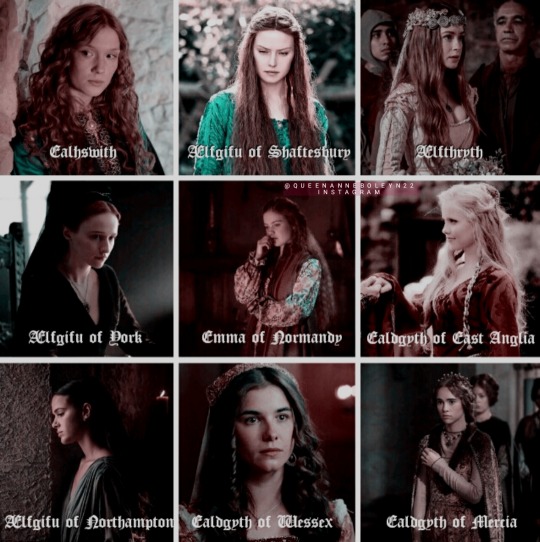
♚Medieval queens of England♚
-pt I-
"Although the first Queen of England is widely considered to be Mary Tudor, throughout the medieval period there were many women who ruled as Queen Regent, Queen Consort, Queen Dowager, or even in their own right."
#perioddramaedit#history#edit#history edit#medieval queens#queens of england#emma of normandy#Ælfgifu of Shaftesbury#Æthelflæd of Damerham#Ælfthryth wife of Edgar#Ælfgifu of York#Ealdgyth#queens of englands#english history#marina ruy barbosa#bruna marquezine#maryia adreevna#claire holt#hera hilmar#daisy ridley
122 notes
·
View notes
Text


Queen consorts of England and Britain | [4/50] | Ælfgifu of Shaftesbury
Ælfgifu was Queen consort of England from 939 until 944 as the wife of Edmund I. Although it was actually Edmund’s predecessor, Æthelstan, that united all the kingdoms of England, since Æthelstan never married, it was Ælfgifu who became the first Queen consort of England. Ælfgifu’s exact date of birth is unknown and her only known relative is her mother, Wynflaed. The exact date of her marriage to Edmund is not recorded, but it’s believed that they married around 939 since their oldest son, Eadwig, was born around 940. Ælfgifu spent her time as Queen consort being largely overshadowed by her mother-in-law, Eadgifu of Kent. It’s believed that she died in 944, possibly in childbirth with her second son, Edgar. During her life, she was a patron of Shaftesbury Abbey and after her death, she was venerated as a saint. Her feast day is celebrated on 18 May.
4 notes
·
View notes
Text
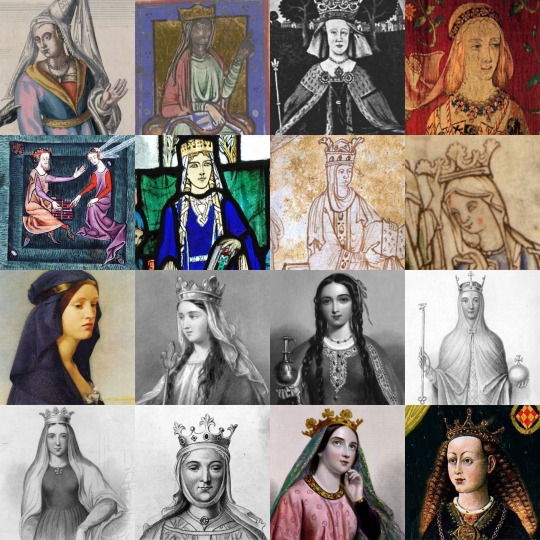



Every Queen of England Ever
I was curious and looked up “every queen of England” and was expecting to find some sort of list, but I didn’t. So, I decided to do the research and make my own. Here is every queen of England to ever exist (that was recorded anyway), the consorts and the rulers.
Judith of Flanders: Queen consort of Wessex when she married Æthelwulf of Wessex from October 1st of 856 to January 13th of 858. She was queen again when she married her stepson, Æthelbald, from 858 to December 20th of 860.
Wulfthryth of Wessex: Queen consort of Wessex from ? - ? wife of Æthelred I.
Ealhswith: Queen consort of Wessex from April 23rd of 871 to October 26th of 899, wife of Alfred the Great.
Ecgwynn: Queen consort of Wessex from ? - ? wife of Edward the Elder.
Ælfflæd: Queen consort of Wessex from ? - ? wife of Edward the Elder.
Eadgifu of Kent: Queen consort of Wessex from ? - ? wife of Edward the Elder.
Ælfgifu of Shaftesbury: Queen consort of England from 939 to 944, wife of Edmund I.
Æthelflæd of Damerham: Queen consort of England from 944 to May 26th of 946, wife of Edmund I.
Ælfgifu: Queen consort of England from November 23rd of 955 to October 1st of 959, wife of Eadwig.
Ælfthryth: Queen consort of England from 964 or 965 to July 8th of 975, wife of Edgar.
Ælfgifu of York: Queen consort of England from the 980s to 1002, wife of Æthelred the Unready.
Emma of Normandy: Queen consort of England from 1002 to 1013, wife of Æthelred the Unready.
Ealdgyth: Queen consort of England from April 23rd of 1016 to November 30th of 1016, wife of Edmund Ironside.
Ælfgifu of Northampton: Queen consort of England from ? - ? wife of Cnut the Great.
Emma of Normandy: Queen consort of England again from July 1017 to November 12th of 1035, wife of Cnut the Great.
Edith of Wessex: Queen consort of England from 1045 to January 5th of 1066, wife of Edward the Confessor.
Ealdgyth of Mercia: Queen consort of England from January 4th of 1066 to October 14th of 1066, wife of Harold II.
Matilda of Flanders: Queen consort of England from December 25th of 1066 to November 2nd of 1083, wife of William the Conquerer.
Matilda of Scotland: Queen consort of England from November 11th of 1100 to May 1st of 1118, wife of Henry I.
Adeliza of Louvain: Queen consort of England from January 24th of 1121 to December 1st of 1135, wife of Henry I.
Matilda of Boulogne: Queen consort of England from December 22nd of 1135 to May 3rd of 1152, wife of Stephen.
Eleanor of Aquitaine: Queen consort of England from December 19th of 1154 to July 6th of 1189, wife of Henry II.
Berengaria of Navarre: Queen consort of England from May 12th of 1191 to April 6th of 1199, wife of Richard I.
Isabella of Angoulême: Queen consort of England from August 24th of 1200 to October 19th of 1216, wife of John.
Eleanor of Provence: Queen consort of England from January 14th of 1236 to November 16th of 1272, wife of Henry III.
Eleanor of Castile: Queen consort of England from November 20th of 1272 to November 28th of 1290, wife of Edward I.
Margaret of France: Queen consort of England from September 8th of 1299 to July 7th of 1307, wife of Edward I.
Isabella of France: Queen consort of England from January 25th of 1308 to January 25th of 1327, wife of Edward II.
Philippa of Hainault: Queen consort of England from January 24th of 1328 to August 15th of 1369, wife of Edward III.
Anne of Bohemia: Queen consort of England from January 20th of 1382 to June 7th of 1394, Wife of Richard II.
Isabella of Valois: Queen consort of England from October 31st of 1396 to September 30th of 1399, wife of Richard II.
Joan of Navarre: Queen consort of England from February 7th of 1403 to March 20th of 1413, wife of Henry IV.
Catherine of Valois: Queen consort of England from June 2nd of 1420 to August 31st of 1422, wife of Henry V.
Margaret of Anjou: Queen consort of England from April 23rd of 1445 to March 4th of 1461, wife of Henry VI.
Elizabeth Woodville: Queen consort of England from May 1st of 1464 to October 3rd of 1470, wife of Edward IV.
Margaret of Anjou: Queen consort of England again from October 3rd of 1470 to April 11th of 1471.
Elizabeth Woodville: Queen consort of England again from April 11th of 1471 to April 9th of 1483.
Anne Neville: Queen consort of England from June 26th of 1483 to March 16th of 1485, wife of Richard III.
Elizabeth of York: Queen consort of England from January 18th of 1486 to February 11th of 1503, wife of Henry VII.
Catherine of Aragon: Queen consort of England from June 11th of 1509 to May 23rd of 1533, wife of Henry VIII.
Anne Boleyn: Queen consort of England from May 28th of 1533 to May 17th of 1536, wife of Henry VIII.
Jane Seymour: Queen consort of England from May 30th of 1536 to October 24th of 1537, wife of Henry VIII.
Anne of Cleves: Queen consort of England from January 6th of 1540 to July 9th of 1540, wife of Henry VIII.
Katherine Howard: Queen consort of England from July 18th of 1540 to November 23rd of 1541, wife of Henry VIII.
Katherine Parr: Queen consort of England and Ireland from July 12th of 1543 to January 28th of 1547, wife of Henry VIII.
Lady Jane Grey: Queen of England and Ireland from July 10th of 1553 to July 19th of 1553.
Mary I: Queen of England and Ireland from July 1553 to November 17th of 1558.
Elizabeth I: Queen of England and Ireland from November 17th of 1558 to March 24th of 1603.
Anne of Denmark: Queen consort of England and Ireland from March 24th of 1603 to March 2nd of 1619, wife of James VI and I.
Henrietta Maria: Queen consort of England, Scotland and Ireland from June 13th of 1625 to January 30th of 1649, wife of Charles I.
Catherine of Braganza: Queen consort of England, Scotland and Ireland from April 23rd of 1662 to February 6th of 1685, wife of Charles II.
Mary of Modena: Queen consort of England, Scotland and Ireland from February 6th of 1685 to December 11th of 1688, wife of James II.
Mary II: Queen of England, Scotland and Ireland along with her husband William III and II from 1689 to December 28th 1694.
Anne: Queen of England, Scotland and Ireland from March 8th of 1702 to May 1st of 1707.
Caroline of Ansbach: Queen consort of Great Britain and Ireland from June 11th of 1727 to November 20th of 1737, wife of George II.
Charlotte of Mecklenburg-Strelitz: Queen consort of Great Britain and Ireland from September 8th of 1761 to November 17th of 1818, wife of George III.
Caroline of Brunswick: Queen consort of the United Kingdom and Hanover from January 29th of 1820 to August 7th of 1821, wife of George IV.
Adelaide of Saxe-Meiningen: Queen consort of the United Kingdom and Hanover from June 26th of 1830 to June 20th of 1837, wife of William IV.
Victoria: Queen of the United Kingdom from June 20th of 1837 to January 22nd of 1901.
Alexandra of Denmark: Queen consort of the United Kingdom and the British Dominions from January 22nd of 1901 to May 6th of 1910, wife of Edward VII.
Mary of Teck: Queen consort of the United Kingdom and the British Dominions from May 6th of 1910 to January 20th of 1936, wife of George V.
Elizabeth Bowes-Lyon: Queen consort of the United Kingdom and the British Dominions from December 11th of 1936 to February 6th of 1952, wife of George VI.
Elizabeth II: Queen of the United Kingdom and the other Commonwealth realms from February 6th of 1952 to present.
#this took forever#british royal family#history#elizabeth ii#elizabeth i#catherine of aragon#anne boleyn#victorian
372 notes
·
View notes
Photo
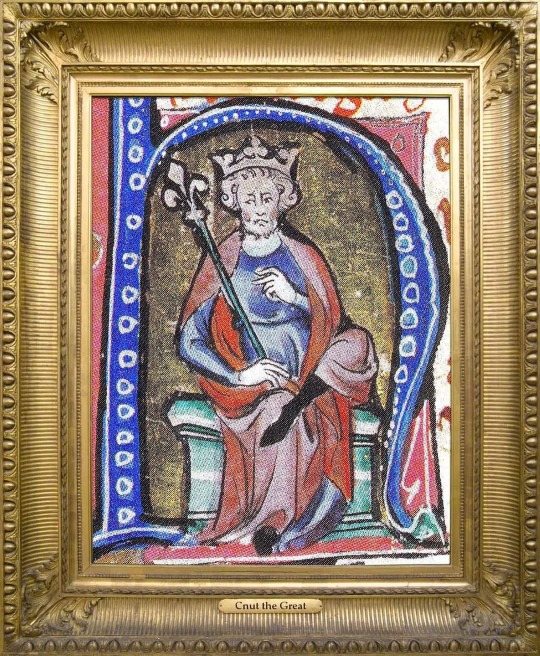
Cnut the Great
.
(Old English: Cnut cyning; Old Norse: Knútr inn ríki; also known as Canute.
.
King of Denmark: 1018–1035.
King of the English: 1016–1035.
King of Norway: 1028–1035.
.
English Coronation: 1017 in London.
.
Born: c. 990.
.
Parents: Sweyn Forkbeard & ?
House of: Jelling
.
Married:
.
1.) – Ælfgifu of Northampton. Ælfgifu (c. 990 – after 1036) was a daughter of Ælfhelm, ealdorman of southern Northumbria, & his wife Wulfrun.
.
Children;
.
Sweyn Knutsson (c. 1016–1035), king of Norway.
.
Harold Harefoot, King of England.
.
2.) – Emma of Normandy (c. 984 – 6 March 1052), previously married to Æthelred the Unready, twice Queen of England.
.
Children;
Harthacnut, King of Denmark and England
.
Gunhilda of Denmark, (c. 1020 – 18 July 1038). She wed Henry III, Holy Roman Emperor.
.
Died: 12 November 1035 (aged around 45), Shaftesbury, Dorset, England.
Burial: Old Minster, Winchester, England. Bones now in Winchester Cathedral, Winchester, England.
.
Successor: Harold Harefoot (son)
.
.
.
#kingsandqueensofgreatbritain #kingsandqueens #Monarchy #RoyalHistory #Royalty #Royals #History #Portraitpainting #historyinpictures #Britishhistory #BritishMonarchy #Art #Painting #Monarch #EnglishHistory #EnglishMonarchy #Medievalhistory #Medievaltimes #HistoryFacts #medieval #MedievalEngland #Viking #Vikings #Cnut #canute #Cnutthegreat #Danes #kingofdenmark #Kingofnorway #kingoftheEnglish (at London, United Kingdom)
https://www.instagram.com/p/CRpUJ9jMtyI/?utm_medium=tumblr
#kingsandqueensofgreatbritain#kingsandqueens#monarchy#royalhistory#royalty#royals#history#portraitpainting#historyinpictures#britishhistory#britishmonarchy#art#painting#monarch#englishhistory#englishmonarchy#medievalhistory#medievaltimes#historyfacts#medieval#medievalengland#viking#vikings#cnut#canute#cnutthegreat#danes#kingofdenmark#kingofnorway#kingoftheenglish
3 notes
·
View notes
Text
Monarch #5
Who: Edgar (Old English: Ēadgār )
Also Known As: Edgar the Peaceful, Edgar the Peaceable
Where: England
Succeeded: His brother, Eadwig
Reigned: 1st October 959 – 8th July 975
Born: 943 or 944, Wessex
Died: 8th July 975 (aged 30/31) in Winchester, England
Buried: Glastonbury Cathedral
Consorts/Children: First married Æthelflæd the White, daughter of Ordmaer, Ealdorman of East Anglia, sometime between 957 and 959. They had one child, Edward, who became king of England.
Following Æthelflæd's death, Edgar carried off (abducted) Wulfthryth of Wilton, who was a nun at the abbey there. After having a child - Eadgyth - Wulfthryth and her daughter returned to Wilton Abbey. Whilst Edgar and Wulfthryth lived as husband and wife, they may not have actually been married.
After Wulfthryth returned to Wilton, Edgar married Ælfthryth, daughter of Ealdorman Ordgar of Devon. They had two children, Edmund Atheling (c.966-c.970) and Æthelred, who became king of England.
Edgar Facts!
Edgar was the younger son of Edmund I and Ælfgifu of Shaftesbury, and succeeded his brother as a teenager.
He recalled Archbishop Dunstan, who had been exiled, and made him his most trusted advisor.
The basis for the current coronation ceremony in the UK is based on the organisation and forms that Dunstan used at Edgar’s coronation.
By the end of Edgar’s reign, England was seen as a truly unified country.
Edgar’s reign was “far more than the reigns of either Alfred or Æthelstan, was probably the most pivotal phase in the development of the institutional structures that were fundamental to royal rule in the eleventh-century kingdom"[1]. His laws were the foundation for later Saxon and Scandinavian rule - Cnut states in a letter that “it is my will that all the nation, ecclesiastical and lay, shall steadfastly observe Edgar's laws”.[2]
He was succeeded by his eldest son, Edward.
Unfortunately, little is known of Æthelflæd the White, but we have information about Edgar’s other wives.
Wulfthryth (also known as Wilfrida) of Wilton Facts!
An English noblewoman (whose parentage is nevertheless unmentioned) apparently living a saintly and blameless life before Edgar decided she should live with him. Dunstan made him do penance for the crime (not being allowed to wear a crown for seven years and giving Wulfthryth several estates (which she gave to the Abbey). She was noted as being carried off, but never as a captive. The crime for which the king did penance was violation of the sanctity of her oaths as a nun, rather than any sort of affront he may have done Wulfthryth. Of course, no account details how the lady herself may or may not have felt about the situation. Edgar acknowledged their daughter, Edith, as his which means that the relationship may very well have been considered a marriage, since the church’s blessing of a marriage at the time wasn’t strictly necessary. She returned to Wilton after a year or so and eventually became Abbess.
It is certain that Wulfthryth had influence over Edgar after she returned to Wilton. With his support she was able to stop bailiffs arresting a thief who had taken sanctuary in her Abbey and had two of Wilton’s priests released from prison on the orders of the reeve of Wilton.
Wulfthryth was canonised as a saint following her death (c.1000) and her feast day is September 13th.
Her and Edgar’s daughter, Eadgyth (also known has Edith, Editha and Ediva), born c.963, went to Wilton Abbey when her mother returned there, and was also canonised after her death in 984 (her feast day is September 16th). She is said to have always been dressed magnificently, and was rebuked by the Bishop of Winchester over it. She said she answered to the judgement of God, who was the only one who could see through outward appearance, and was the only one who was infallible, adding "For pride may exist under the garb of wretchedness; and a mind may be as pure under these vestments as under your tattered furs"[3]. The Bishop of Winchester really had no great influence over her appearance or opinion anyway, as Dunstan supported her and made her Abbess of three abbeys when she was only thirteen (deputies were appointed for her). It is said that a week after she died, Edith appeared in glory to her mother and told her that the Devil had tried to accuse her, but that she had broken his head. Which is definitely one way to deal with Satan.
Ælfthryth Facts!
Also known as Alfrida, Elfrida, or Elfthryth, she married Edgar after Wulfthryth returned to Wilton.
She was the first wife of an English king known to have been crowned and anointed.
The chronicler, William of Malmesbury, stated that the beauty of Ealdorman Ordgar's daughter, Ælfthryth, was reported to King Edgar. Edgar, looking for a Queen, sent Æthelwald to see Ælfthryth, ordering him "to offer her marriage [to Edgar] if her beauty were really equal to report." When she turned out to be just as beautiful as was said, Æthelwald married her himself and reported back to Edgar that she was quite unsuitable. Edgar was eventually told of this, and decided to repay Æthelwald's betrayal in like manner. He said that he would visit the poor woman, which alarmed Æthelwald. He asked Ælfthryth to make herself as unattractive as possible for the king's visit, but she did the opposite. Edgar, quite besotted with her, killed Æthelwald during a hunt.
It’s a vivid account, but there is no supporting evidence to add veracity to the story. It may be a tale told about Ælfthryth in support of the image of her as a scheming and evil stepmother and wicked queen. By the 12th century the Liber Eliensis was calling her a witch who murdered not only her stepson, Edward the Martyr, but also the Abbot of Ely.
We may never know the truth of either or actions or her motives; Ælfthryth’s reputation might have been treated more kindly by history if her son, succeeding Edward the Martyr, had been more capable.
[1] Molyneaux, George (2015). The Formation of the English Kingdom in the Tenth Century.
[2] Trow, Cnut
[3] Jameson, op. cit., p. 96
#Edgar the Peaceful#edgar#kings of england#queens of england#Æthelflæd the White#Wulfthryth of Wilton#Ælfthryth#monarchs#monarchy
4 notes
·
View notes
Text






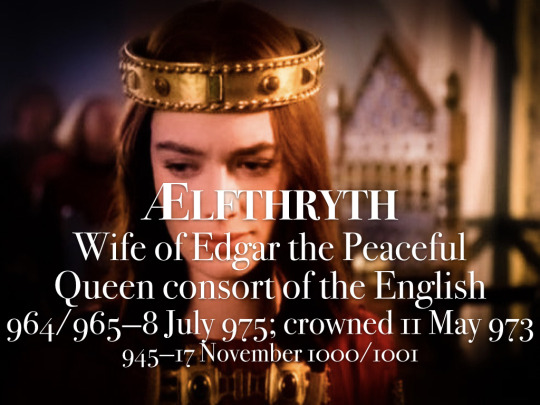



Consorts of England and Britain
House of Wessex
#consorts of england and britain#ealhswith#Ælfflæd#eadgifu of kent#Ælfgifu of shaftesbury#Æthelflæd of damerham#Ælfgifu#Ælfthryth#Ælfgifu of york#emma of normandy#ealdgyth#edith of wessex
5 notes
·
View notes
Photo
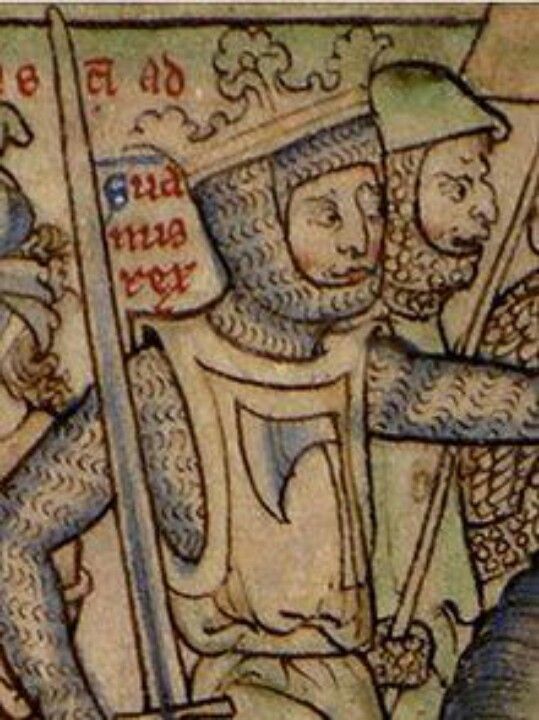

NOV. 12, 1035. DEATH OF CANUTE REX, KING OF ENGLAND, NORWAY AND DENMARK. CREATOR OF 'EMPIRE OF THE SEAS'.
"On 12th November 1035 Cnut the Great, King of England and Emperor of the North, died at Shaftesbury and was buried at Winchester Old Minster. He was succeeded in England by his son Harald, while his other son, Harðacnut, took and fought to hold the throne of Denmark.
According to the Knytlinga Saga:
“Knut was exceptionally tall and strong, and the handsomest of men, all except for his nose, that was thin, high-set, and rather hooked. He had a fair complexion none-the-less, and a fine, thick head of hair. His eyes were better than those of other men, both the handsomer and the keener of their sight.”
Cnut was the son of Sweyn Forkbeard, the Dane who was briefly King of England (by right of conquest), having finally driven out Æþelred Unrede in 1013 after extorting tribute from him for a number of years. However, Sweyn did not live long to enjoy the fruits of his victory and died in February 1014.
On Sweyn’s death the Danelaw came out in support of Cnut but the other English nobles recalled Æþelred from Normandy where he was in exile. Æþelred returned to England, and, in a pre-cursor to the events of Runnymede in 1215 when John agreed the Magna Carta, Æþelred swore to be a better king and rule more justly.
Cnut at this time was a young warrior, relatively untried as a leader of men, and despite his support in parts of the country he was driven out by the English until he returned in full force in 1015. He was much more effective in this later campaign and took most of the country, with the only meaningful resistance being brought by Edmund Ironside, son of Æþelred.
After Æþelred’s death in 1016 Edmund fought back even more vigorously against Cnut so that by November the two were brought to an agreement at Deerhurst to split the country between them. However, Edmund died soon after and Cnut became sole ruler of England with his coronation taking place on Christmas Day.
Things moved on smartly in 1017, as the Anglo-Saxon Chronicle tells us:
“AD 1017. In this year king Cnut obtained the whole realm of the English race, and divided it into four parts: Wessex to himself, and East Anglia to Thurkyll, and Mercia to Eadric, and Northumbria to Irke. And in this year was Eadric the ealdorman slain in London, very justly, and Northman, son of Leofwine the ealdorman, and Aethelweard, son of Aethelmaer the great, and Brihtric, son of Aelfeh, in Devonshire. And king Cnut banished Eadwigthe etheling, and afterwards commanded him to be slain, and Eadwi, king of the churls. And then, before the kalends of August, the king commanded the relict of king Aethelred, Richard's daughter, to be fetched for his wife, 'that was Elfgive in English, Ymma in French.”
You read that right – he married Æþelred’s widow, Emma of Normandy, daughter of Richard of Normandy and mother of Edward and Alfred. The couple had two children, Gunnhilda and Harðacnut, while Cnut also had a “Danish” wife Ælfgifu of Northampton, with whom he had a son Harald (Harefoot).
Cnut ruled from 1016-1035. He established the earldoms of England and although he initially controlled Wessex directly he eventually created the Earldom of Wessex which was given to Godwin, cementing that family’s rise to power.
Cnut’s brother Harald died in 1018 and Cnut then took the throne of Denmark as well as England. In Norway, Olaf had replaced Sweyn Forkbeard as king but in 1029 his nobles supported the invasion of Cnut and so Cnut became King of Norway as well.
England took up Cnut’s main attention and he placed Ælfgifu and Harald as regents in Norway with disastrous consequences. Their rule was so unpopular that they were driven out by Magnus, the son of Olaf, in 1035, when as an eleven year old boy he was proclaimed king by the Norwegian nobles. Olaf’s brother Harald was to return later and to have a significant effect on English history, for he became better known as Harald Hardrada.
Cnut worked with the church, particularly Bishop Wulfstan, to rule England according to English laws and customs from the time of King Edgar. He promoted men he trusted from the English ranks as well as Danish. In 1027 he was able to leave the kingdom securely while he travelled to Rome to witness the coronation of Conrad, the Holy Roman Emperor.
While in Rome he negotiated fiercely for better terms for English merchants, pilgrims and churchmen. He wrote in a letter to his nobles:
“I spoke with the Emperor himself and the Lord Pope and the princes there about the needs of all people of my entire realm, both English and Danes, that a juster law and securer peace might be granted to them on the road to Rome and that they should not be straitened by so many barriers along the road, and harassed by unjust tolls; and the Emperor agreed and likewise King Robert who governs most of these same toll gates. And all the magnates confirmed by edict that my people, both merchants, and the others who travel to make their devotions, might go to Rome and return without being afflicted by barriers and toll collectors, in firm peace and secure in a just law.”
Henry of Huntingdon, writing in the 12th century, records a summary of his reign including the curious story of the King Cnut and the Tide:
“A few words must be devoted to the power of this king. Before him there had never been in England a king of such great authority, He was lord of all Denmark, of all England, of all Norway, and also of Scotland. In addition to the many wars in which he was most particularly illustrious, he performed three fine and magnificent deeds. The first is that he gave his daughter in marriage to the Roman emperor, with indescribably riches. The second, that on his journey to Rome, he had the evil taxes that were levied on the road that goes through France, called tolls or passage tax, reduced by half at his own expense. The third, that when he was at the height of his ascendancy, he ordered his chair to be placed on the sea-shore as the tide was coming iin. The he said to the rising tide, “You are subject to me, as the land on which I am sitting is mine, and no one has resisted my overlordship with impunity. I command you, therefore, not to rise onto my land, nor to presume to wet the clothing or limbs of your master.” But the sea came up as usual, and disrespectfully drenched the king’s feet and shins. So jumping back, the king cried, “Let all the world know that the power of kings is empty and worthless, and there is no king worthy of the name save Him by whose will heaven, earth and sea obey eternal laws.” Thereafter King Cnut never wore the golden crown, but placed it on the image of the crucified Lord, in eternal praise of God the great king. By whose mercy may the soul of King Cnut enjoy rest.”
Cnut was buried at the Old Minster in Winchester, which he and Queen Emma had richly endowed, and his bone translated to a mortuary chest when the cathedral was rebuilt. In the English Civil War (17th century) his bones were scattered and trampled with others by soldiers, and only later collected and placed back in the mortuary chests, although in a muddled fashion with the other victims of the desecration.
Coincidentally on 12th November 1041 Cnut’s son, Harthacnut, laid waste to Worcester after the murder of his tax collectors on 4th May – (...)."
Credits to facebook page "Anglo-Saxon History in Yorkshire."
#Cnut the Great#King Cnut#on this day in history#Queen Emma#Reine Ymma#Aelfgifu Regina#Canute Rex#King Canute#King Knud#Denmark#medieval#Danish rule#monarchy#history#middle ages#empire of the sea
13 notes
·
View notes
Text


Queen consorts of England and Britain | [3/50] | Eadgifu of Kent
Eadgifu was Queen consort of Wessex from about 919 until 924 as the third wife of Edward the Elder. She was born possibly between 899—903 and was the daughter of ealdorman Sigehelm of Kent. She married Edward the Elder in about 919 and they had four children together including Edmund and Eadred who both became Kings of England and Eadburh who became a saint. Although she was not treated well by her step-son, Æthelstan, during his reign, she regained her power and influence during the reigns of her sons. She was so influential, in fact, that she often overshadowed her daughter-in-law, Ælfgifu of Shaftesbury. During the reign of her grandson, Eadwig, she was stripped of all her lands and power possibly because of the fact that she sided with Eadwig’s younger brother, Edgar, during the conflict between them. However, once Edgar succeeded to the throne, her lands were restored to her. Her exact date of death is unknown, but she was last recorded at a charter in 966.
10 notes
·
View notes
Photo
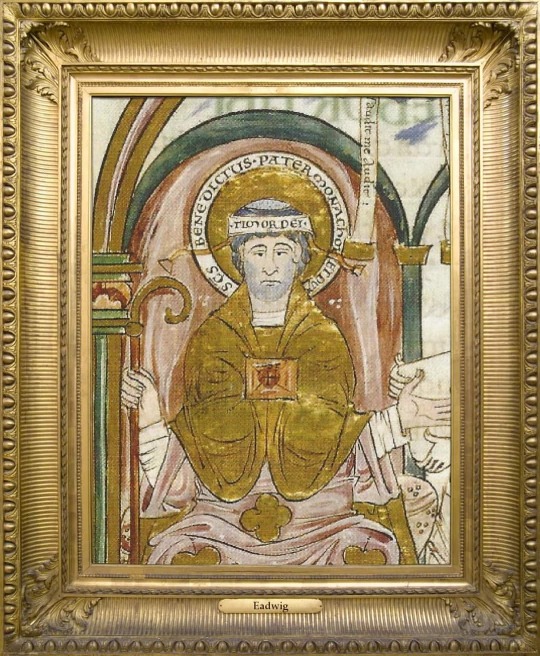
Eadwig 👑
.
(also spelled Edwy or Eadwige, & sometimes called the All-Fair.
.
King of the English
.
Reign: 23 November 955 – 1 October 959
.
_______________
.
Born: c. 940, Wessex, England.
.
Parents: Edmund I and Ælfgifu of Shaftesbury
.
House of: Wessex
.
Married: Ælfgifu (annulled)
.
Children: none
.
Died: 1 October 959 (aged around 19), Gloucester, England.
.
Burial: Winchester Cathedral.
.
Successor: Edgar the Peaceful (brother)
.
.
.
#kingsandqueensofgreatbritain #kingsandqueens #Monarchy #RoyalHistory #Royalty #Royals #History #Portraitpainting #historyinpictures #Britishhistory #BritishMonarchy #Art #Painting #Monarch #EnglishHistory #EnglishMonarchy #Heritage #Medievalhistory #Medievaltimes #HistoryFacts #medieval #MedievalEngland #Anglosaxons #Anglosaxon #Eadwig #KingEadwig #Houseofwessex #AnglosaxonKing #thelastkingdom #Wessex (at Winchester, Hampshire)
https://www.instagram.com/p/CRkNvrQM26S/?utm_medium=tumblr
#kingsandqueensofgreatbritain#kingsandqueens#monarchy#royalhistory#royalty#royals#history#portraitpainting#historyinpictures#britishhistory#britishmonarchy#art#painting#monarch#englishhistory#englishmonarchy#heritage#medievalhistory#medievaltimes#historyfacts#medieval#medievalengland#anglosaxons#anglosaxon#eadwig#kingeadwig#houseofwessex#anglosaxonking#thelastkingdom#wessex
2 notes
·
View notes
Photo
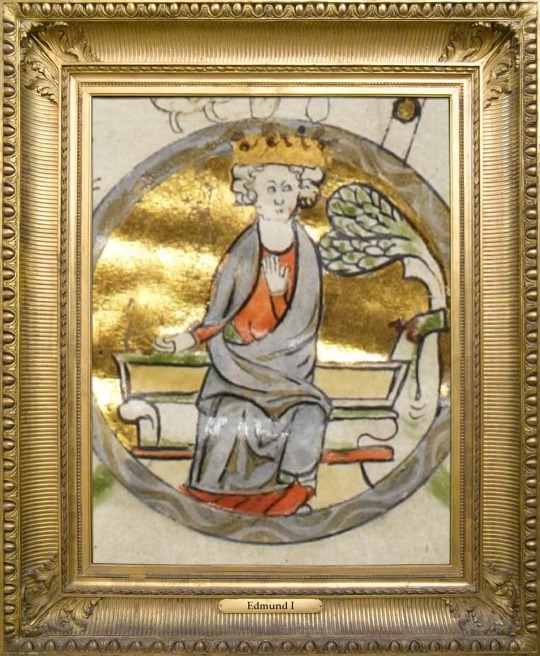
Edmund I
(Old English: Ēadmund, pronounced [ˈæːɑdmund])
.
King of the English.
Reign: 27 October 939 – 26 May 946
Coronation: c. 29 November 939, probably at Kingston upon Thames.
.
Born: 921, Wessex
Parents: Edward the Elder & Eadgifu of Kent
House of: Wessex
.
Married.: (1.) Ælfgifu of Shaftesbury (d.944)
.
Children: Eadwig (c. 940–959), and Edgar (c. 943–975), both kings of England
.
(2.) Æthelflæd of Damerham, no known children.
.
Died: 26 May 946 (aged 24–25), Pucklechurch, Gloucestershire, England
Burial: Glastonbury Abbey.
.
🗡️ Edmund was murdered by Leofa, a convicted outlaw, at Pucklechurch in Gloucestershire. According to the post-Conquest chronicler, John of Worcester, Leofa attacked Edmund's seneschal, & Edmund was stabbed when he intervened to protect his servant.
.
Successor: His brother Eadred.
.
.
.
#kingsandqueensofgreatbritain #kingsandqueens #Monarchy #RoyalHistory #Royalty #Royals #History #Portraitpainting #historyinpictures #Britishhistory #BritishMonarchy #Art #Painting #Monarch #EnglishHistory #EnglishMonarchy #Heritage #Medievalhistory #Medievaltimes #HistoryFacts #medieval #MedievalEngland #Anglosaxons #Anglosaxon #EdmundI #kingEdmund #kingEdmundI #Houseofwessex #Wessex #kingoftheEnglish (at Winchester, Hampshire)
https://www.instagram.com/p/CRhhq3eM0o0/?utm_medium=tumblr
#kingsandqueensofgreatbritain#kingsandqueens#monarchy#royalhistory#royalty#royals#history#portraitpainting#historyinpictures#britishhistory#britishmonarchy#art#painting#monarch#englishhistory#englishmonarchy#heritage#medievalhistory#medievaltimes#historyfacts#medieval#medievalengland#anglosaxons#anglosaxon#edmundi#kingedmund#kingedmundi#houseofwessex#wessex#kingoftheenglish
2 notes
·
View notes